Hip Impingement & Acupuncture Treatment: A Comprehensive Guide to Pain Relief and Mobility
Hip impingement, also known as femoroacetabular impingement (FAI), is a condition characterized by abnormal contact between the femoral head and the hip socket, often leading to pain, stiffness, and reduced range of motion. It affects athletes, active individuals, and even sedentary people, interfering with daily activities and physical performance. While conventional treatments like physical therapy, anti-inflammatory medications, and surgery are commonly prescribed, many are now turning to acupuncture as a non-invasive, holistic approach to manage hip impingement. Rooted in Traditional Oriental Medicine (TOM), acupuncture addresses both the structural and energetic imbalances that contribute to hip pain. By stimulating specific points along the body’s meridians, acupuncture helps reduce inflammation, alleviate muscle tension, and enhance circulation in the hip region, offering not just symptomatic relief but also long-term support for joint health and mobility.
- What Is Hip Impingement?
- Types of Hip Impingement
- Causes and Risk Factors
- Symptoms of Hip Impingement
- Diagnosis
- Conventional Treatments for Hip Impingement
- How Acupuncture Helps Hip Impingement
- Key Acupoints for Hip Impingement
- What to Expect During Acupuncture for Hip Impingement
- Benefits of Acupuncture for Hip Impingement
- Integrating Acupuncture with Other Treatments
- Lifestyle Tips to Support Acupuncture for Hip Impingement
- Conclusion
What Is Hip Impingement?
Hip impingement occurs when there is abnormal contact between the femoral head (the ball of the thigh bone) and the acetabulum (the socket of the pelvis). This friction can lead to pain, stiffness, and limited range of motion in the hip joint. Over time, FAI may contribute to cartilage damage, labral tears, or even osteoarthritis if left untreated.
Maybe You Need:
Types of Hip Impingement
There are three primary types of FAI, each defined by the structural issue causing the impingement:
- Cam Impingement: The femoral head has an irregular, non-spherical shape, causing it to jam into the acetabulum during movement, particularly during flexion or rotation.
- Pincer Impingement: The acetabulum has excessive coverage over the femoral head, leading to pinching of the labrum (the cartilage ring around the socket).
- Combined Impingement: A combination of cam and pincer deformities, which is the most common form.
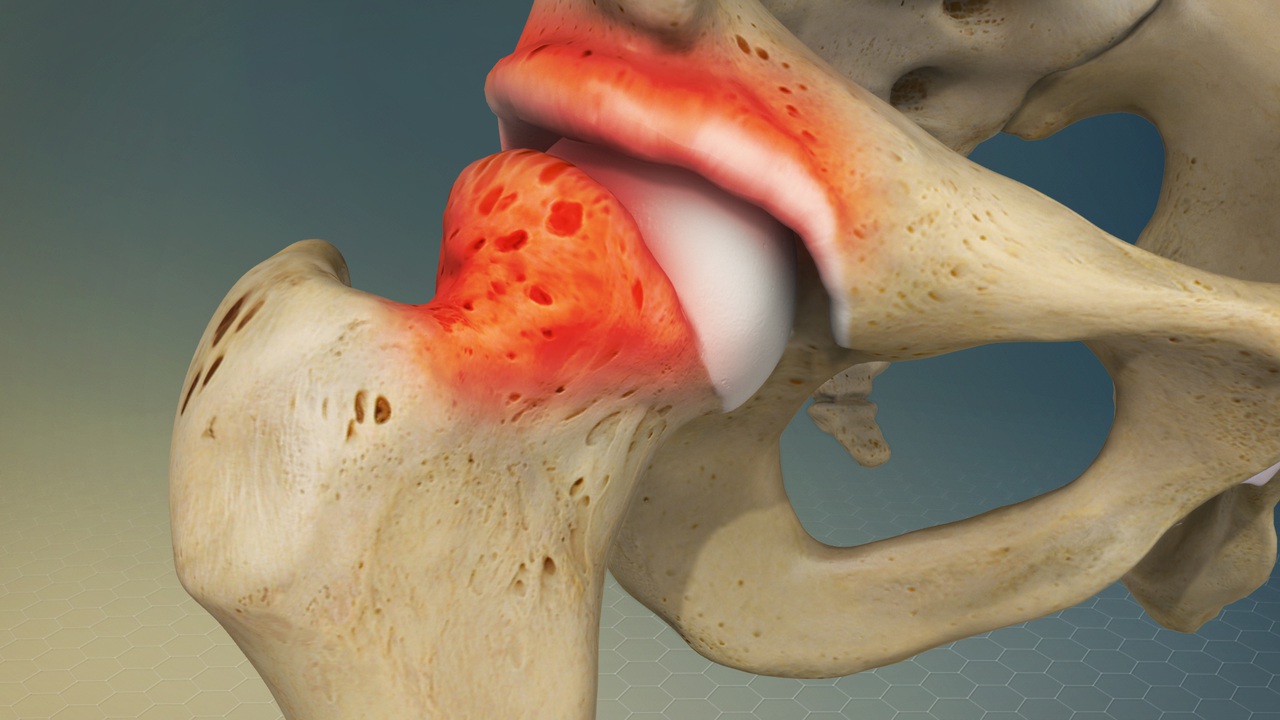
Causes and Risk Factors
Hip impingement can result from various factors, including:
- Structural Abnormalities: Congenital or developmental issues in the hip joint, such as abnormal bone growth during adolescence.
- Repetitive Movements: Activities involving repeated hip flexion, rotation, or high-impact motions (e.g., running, soccer, hockey, or dance) can exacerbate or trigger FAI.
- Injury or Trauma: Previous hip injuries, such as fractures or dislocations, may alter joint mechanics.
- Genetics: A family history of hip issues may increase the likelihood of FAI.
- Muscle Imbalances: Tight hip flexors, weak glutes, or poor core stability can contribute to abnormal hip mechanics.
- Sedentary Lifestyle: Prolonged sitting can lead to tightness in the hip joint, worsening symptoms.
Symptoms of Hip Impingement
Common symptoms include:
- Hip or Groin Pain: A deep, aching pain in the front of the hip or groin, often worsened by sitting, squatting, or pivoting.
- Stiffness: Limited range of motion, especially during hip flexion or rotation.
- Clicking or Locking: Sensations of catching or locking in the hip joint, sometimes due to labral tears.
- Referred Pain: Discomfort radiating to the thigh, lower back, or buttocks.
- Reduced Mobility: Difficulty with activities like climbing stairs, getting in/out of cars, or exercising.

Diagnosis
Diagnosing hip impingement typically involves:
- Physical Examination: Tests like the impingement test (FADIR: flexion, adduction, internal rotation) to assess pain and range of motion.
- Imaging: X-rays to identify bone abnormalities, MRI to evaluate soft tissues (e.g., labrum, cartilage), or CT scans for detailed bone structure.
- Medical History: Discussing symptoms, activity levels, and previous injuries with a healthcare provider.
Because hip impingement symptoms can mimic other conditions (e.g., hip bursitis, tendinitis, or hernias), a thorough evaluation by a doctor or orthopedic specialist is essential.
Conventional Treatments for Hip Impingement
Traditional treatments for FAI aim to reduce pain, improve mobility, and prevent further joint damage. These may include:
- Physical Therapy: Exercises to strengthen hip muscles, improve flexibility, and correct movement patterns.
- Medications: Nonsteroidal anti-inflammatory drugs (NSAIDs) like ibuprofen to manage pain and inflammation.
- Corticosteroid Injections: To reduce inflammation in the hip joint, though effects are often temporary.
- Activity Modification: Avoiding aggravating movements, such as deep squats or high-impact sports.
- Surgery: Arthroscopic surgery to reshape the femoral head or acetabulum, repair labral tears, or remove damaged cartilage in severe cases.
While these treatments can be effective, they may not address underlying imbalances or provide long-term relief for all patients. This is where acupuncture, a holistic and non-invasive therapy, can play a valuable role, either as a standalone treatment or in combination with conventional approaches.
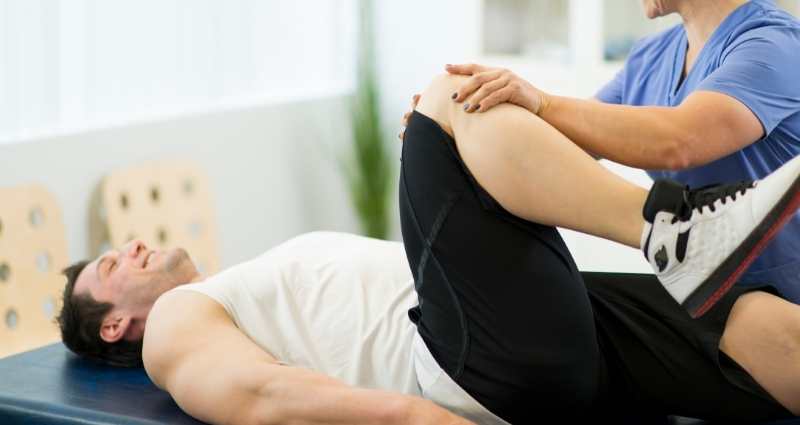
How Acupuncture Helps Hip Impingement
Acupuncture involves inserting fine, sterile needles into specific points on the body to stimulate the flow of energy along meridians, according to TOM principles. For hip impingement, acupuncture targets pain, inflammation, and muscle tension while promoting overall balance in the body. Here’s how it works:
- Pain Relief: Acupuncture stimulates the release of endorphins and other natural pain-relieving chemicals, reducing hip and groin discomfort.
- Reducing Inflammation: By modulating the body’s inflammatory response, acupuncture can decrease swelling in the hip joint and surrounding tissues.
- Improving Blood Flow: Enhanced circulation to the hip area supports tissue repair, including cartilage and labral damage.
- Relaxing Muscles: Acupuncture relieves tightness in the hip flexors, glutes, and surrounding muscles, improving joint mobility.
- Balancing Energy: In TOM, hip pain is often linked to imbalances in the Liver, Kidney, or Gallbladder meridians. Acupuncture restores harmony to these pathways.
- Stress Reduction: By calming the nervous system, acupuncture reduces stress-related muscle tension that can exacerbate FAI symptoms.
Research supports acupuncture’s efficacy for musculoskeletal pain. A 2017 study in The Journal of Pain found that acupuncture significantly reduced chronic pain in joints, including the hip, compared to sham acupuncture. Another study in Acupuncture in Medicine (2019) showed that acupuncture improved pain and function in patients with hip osteoarthritis, which shares similarities with FAI-related joint damage.
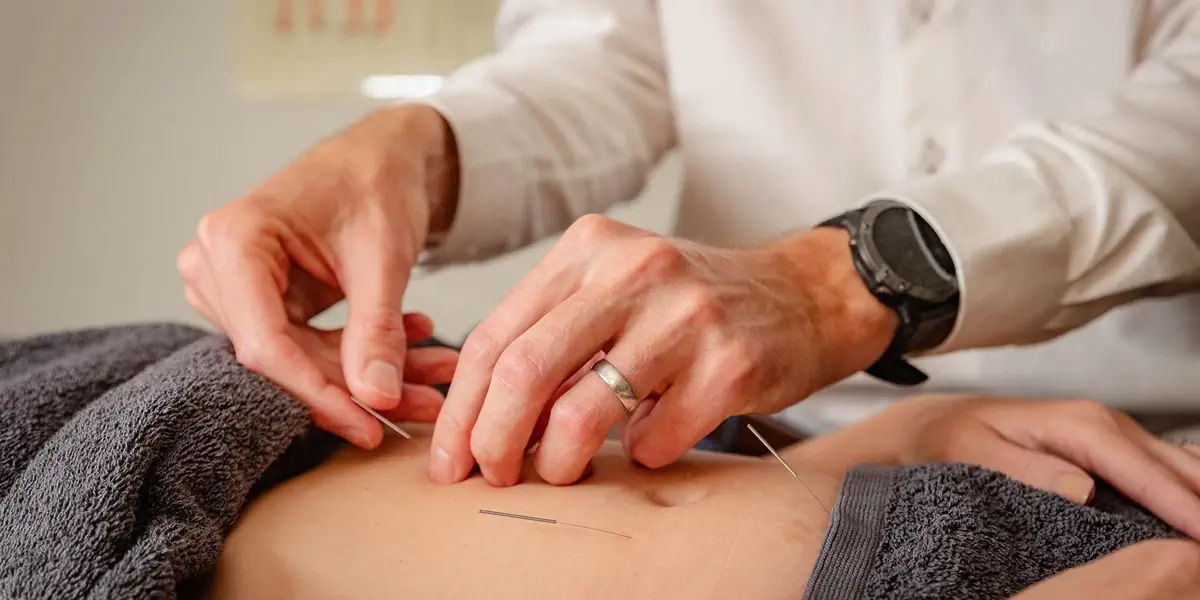
Key Acupoints for Hip Impingement
Acupuncture for hip impingement targets specific points to address pain, inflammation, and restricted mobility. Below are the most commonly used acupoints, their locations, and their benefits. These should be applied by a licensed acupuncturist or, for acupressure, with gentle, firm pressure for 1–2 minutes per point.
- GB30 (Huantiao / Jumping Circle)
- Location: On the buttocks, about one-third of the way from the top of the hip bone (greater trochanter) to the sacrum, in a depression when the hip is flexed.
- Benefits: A primary point for hip pain, GB30 relieves discomfort in the hip joint, buttocks, and lower back. It’s particularly effective for sciatica-like pain and stiffness associated with FAI.
- How to Apply: Requires an acupuncturist due to its deep location. For acupressure, press firmly with a thumb or knuckle, ideally with assistance.
- GB34 (Yanglingquan / Yang Mound Spring)
- Location: On the outer lower leg, in the depression just below and in front of the head of the fibula (the smaller bone of the lower leg).
- Benefits: Known as the “influential point” for tendons and muscles, GB34 relaxes tight hip and leg muscles, reduces inflammation, and improves mobility. It’s ideal for FAI-related stiffness.
- How to Apply: Press with the thumb in a circular motion, suitable for self-acupressure.
- BL40 (Weizhong / Supporting Middle)
- Location: At the back of the knee, in the center of the crease between the two tendons.
- Benefits: BL40 relieves pain radiating to the lower back, hips, and legs. It also improves blood flow and reduces muscle tension in the posterior chain.
- How to Apply: Press gently with fingers, ideal for self-acupressure while seated.

- ST31 (Biguan / Thigh Gate)
- Location: On the front of the thigh, directly below the crease where the thigh meets the pelvis, in a depression when the leg is flexed.
- Benefits: ST31 alleviates hip and groin pain, improves hip joint mobility, and strengthens the thigh muscles, supporting FAI recovery.
- How to Apply: Use fingers to apply firm pressure, suitable for self-acupressure.
- LR3 (Taichong / Great Surge)
- Location: On the top of the foot, in the depression between the first and second toes, about two finger-widths back from the web.
- Benefits: LR3 balances the Liver meridian, which governs tendons and emotional stress. It reduces hip tension, pain, and stress-related symptoms.
- How to Apply: Press with the thumb, ideal for self-acupressure to promote relaxation.
- BL23 (Shenshu / Kidney Shu)
- Location: On the lower back, about 1.5 finger-widths to the left and right of the spine, at the level of the second lumbar vertebra (near the waist).
- Benefits: BL23 strengthens the Kidney meridian, which supports bones and joints in TOM. It reduces lower back and hip pain, especially in chronic FAI cases.
- How to Apply: Requires an acupuncturist or assistance due to its location. Firm pressure can be applied with thumbs.
- GB29 (Juliao / Squatting Bone Hole)
- Location: On the side of the hip, in the depression midway between the greater trochanter and the anterior superior iliac spine (the front of the pelvic bone).
- Benefits: GB29 directly targets hip joint pain, improves mobility, and relieves tension in the surrounding muscles.
- How to Apply: Press with fingers or have an acupuncturist target this point.

What to Expect During Acupuncture for Hip Impingement
Initial Consultation
A licensed acupuncturist will assess your symptoms, medical history, lifestyle, and activity levels. In TOM, they may examine your pulse, tongue, and posture to identify imbalances (e.g., Liver Energy stagnation or Kidney deficiency). They’ll also ask about pain triggers, such as specific movements or positions.
Treatment Process
- Session Duration: Sessions typically last 30–60 minutes.
- Needle Insertion: Fine, sterile needles are inserted into selected acupoints, often around the hip, leg, or back, and sometimes distal points (e.g., hands or feet). You may feel a slight prick, followed by warmth, tingling, or a dull ache (indicating Energy activation).
- Number of Sessions: Acute hip impingement may improve in 6–8 sessions, while chronic cases or those with labral tears may require 10–12 sessions or more, typically weekly or biweekly.
- Adjunct Therapies: Acupuncturists may use moxibustion (warming points with burning mugwort), cupping to release muscle tension, or Tui Na (TOM massage) to enhance results.
Safety and Side Effects
Acupuncture is safe when performed by a licensed practitioner. Minor side effects may include temporary soreness, bruising, or mild fatigue. Avoid acupuncture if you have an infection at the needle site, a bleeding disorder, or are on blood thinners. Inform your acupuncturist if you’re pregnant, as certain points (e.g., GB30) may be contraindicated.
Benefits of Acupuncture for Hip Impingement
- Non-Invasive: Acupuncture avoids the risks of surgery or long-term medication use.
- Holistic Relief: Addresses pain, inflammation, muscle tension, and emotional stress, which can exacerbate FAI symptoms.
- Complementary Care: Works well alongside physical therapy, strengthening exercises, or post-surgical rehabilitation.
- Personalized Treatment: Tailored to your specific symptoms, activity level, and TOM diagnosis.
- Improved Mobility: By relaxing tight muscles and reducing inflammation, acupuncture enhances hip joint function.
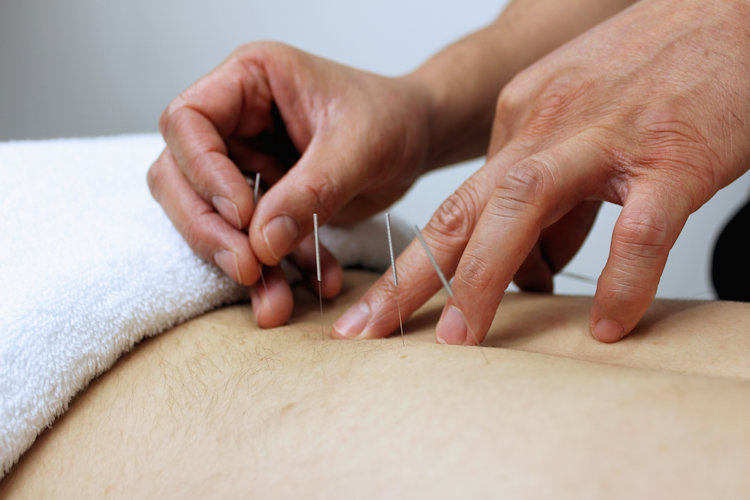
Integrating Acupuncture with Other Treatments
For optimal results, combine acupuncture with these strategies:
- Physical Therapy: Work with a physical therapist to strengthen the glutes, core, and hip stabilizers while improving flexibility. Exercises like clamshells, bridges, or hip flexor stretches can complement acupuncture.
- Activity Modification: Avoid movements that aggravate FAI, such as deep squats or prolonged sitting. Use ergonomic chairs or standing desks to reduce hip stress.
- Diet and Hydration: In TOM, a balanced diet supports joint health. Include anti-inflammatory foods like leafy greens, fatty fish, and turmeric, and stay hydrated to support tissue repair.
- Stress Management: Practice yoga, meditation, or deep breathing to reduce tension, as stress can tighten hip muscles.
- Posture Correction: Maintain proper alignment during daily activities to prevent additional strain on the hip joint.
While acupuncture can significantly reduce hip impingement symptoms, certain signs warrant immediate medical evaluation:
- Severe, Persistent Pain: Pain that doesn’t improve with rest or treatment.
- Locking or Catching: Frequent locking of the hip joint, indicating possible labral tears or loose bodies.
- Numbness or Tingling: Symptoms extending to the leg or foot, suggesting nerve involvement.
- Swelling or Redness: Signs of infection or severe inflammation.
- Loss of Mobility: Inability to bear weight or move the hip without significant pain.
These could indicate advanced joint damage, infection, or other conditions requiring urgent care, such as hip fractures or avascular necrosis.
To ensure safe and effective treatment:
- Verify Credentials: Choose a practitioner licensed by a recognized body, such as the National Certification Commission for Acupuncture and Oriental Medicine (NCCAOM) in the U.S.
- Seek Experience: Look for acupuncturists with expertise in musculoskeletal conditions or hip pain.
- Check Reviews: Read online reviews or ask for referrals from healthcare providers or friends.
- Confirm Hygiene: Ensure the clinic uses single-use, sterile needles and follows strict sanitation protocols.
Lifestyle Tips to Support Acupuncture for Hip Impingement
- Stay Active: Engage in low-impact activities like swimming or cycling to maintain hip mobility without aggravating symptoms.
- Stretch Regularly: Perform gentle hip stretches, such as pigeon pose or figure-four stretches, to release tension.
- Use Heat or Cold Therapy: Apply a warm compress to relax muscles before acupuncture or a cold pack to reduce inflammation after activity.
- Maintain a Healthy Weight: Excess weight can strain the hip joint, worsening FAI symptoms.
- Follow TOM Dietary Advice: Avoid cold, greasy, or heavy foods that may disrupt energy flow, and opt for warm, nourishing meals like soups or steamed vegetables.
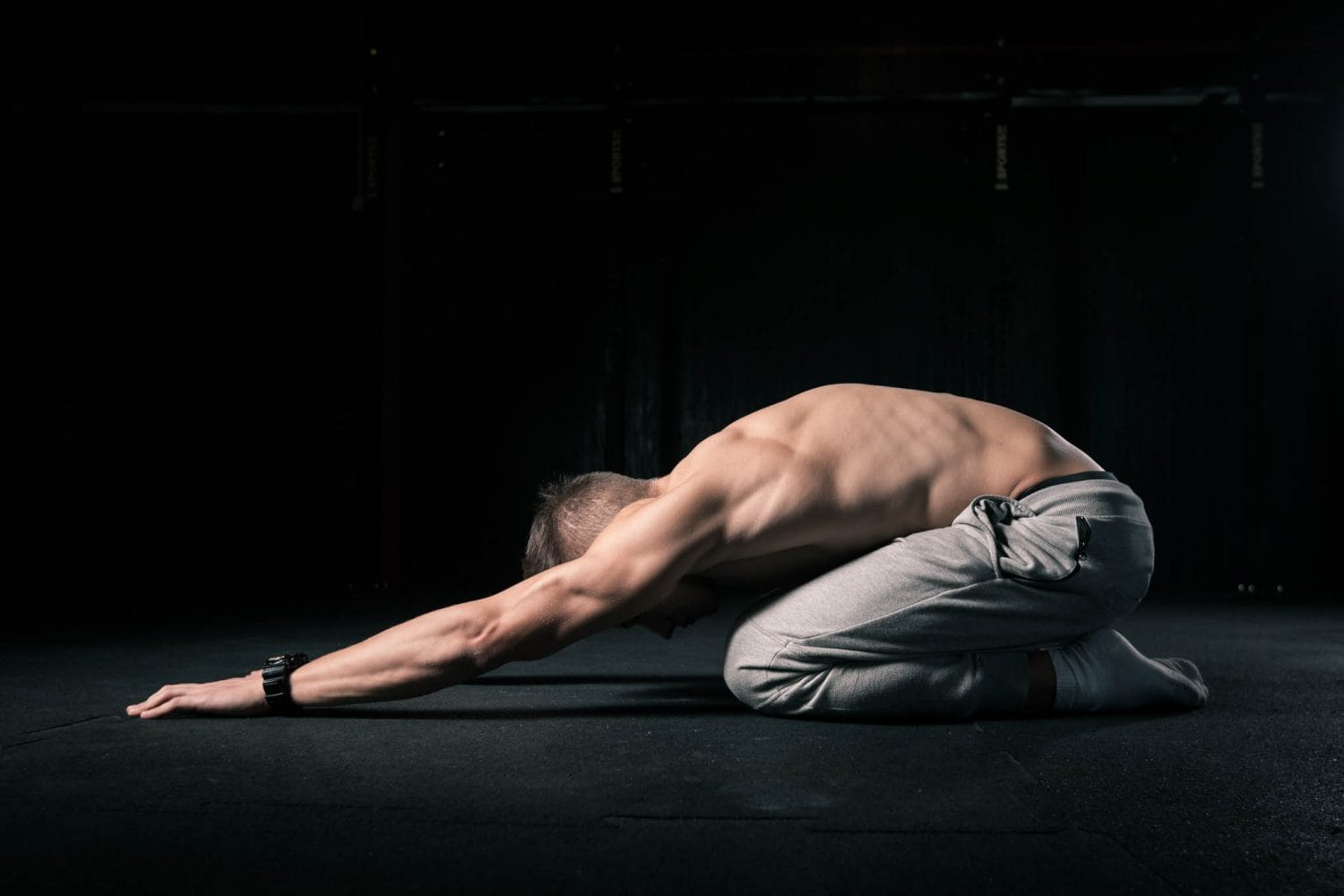
Conclusion
Hip impingement can be a challenging condition, limiting mobility and causing persistent pain. Acupuncture offers a safe, holistic, and effective approach to managing FAI symptoms by reducing pain, inflammation, and muscle tension while improving joint function. By targeting key acupoints like GB30, GB34, and ST31, acupuncture addresses both the physical and energetic imbalances contributing to hip impingement. When combined with physical therapy, lifestyle changes, and medical guidance, acupuncture can enhance quality of life and support long-term hip health.
If you’re struggling with hip impingement, consider acupuncture as a complementary or standalone treatment. Consult a licensed acupuncturist to develop a personalized plan tailored to your needs. With consistent care and proactive steps, you can regain mobility, reduce pain, and reclaim an active lifestyle.
You need acupuncture treatment for Hip impingement? Contact Fuji Wellness now!
Fuji Wellness:
- Address: 132-0031 Matsushima 1-chome, 21-14, Tokyo, Japan
- Chat with us: Click here
- Email: sunnyphamsensei@gmail.com







